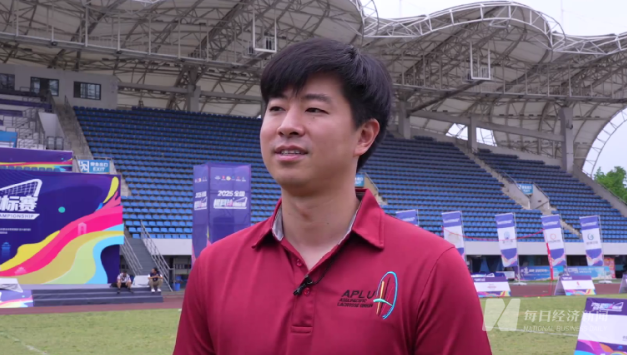
Chris Jinno Photo/Qu Kaiyi (NBD)
The Chengdu World Games women's sixes lacrosse competition has concluded, with the USA, Canada, and Australia winning gold, silver, and bronze respectively. As a new addition to the 2028 Los Angeles Olympics, lacrosse is growing globally, and in China, it's showing great promise.
Chris Jinno, Executive Director of the Asia Pacific Lacrosse Union (APLU), observed that while the sport was once limited to private clubs in China, the involvement of sports organizations is now fueling its growth. "I believe China will quickly become a top lacrosse powerhouse in Asia," he said, if the sport continues to expand.
The Appeal of Speed and Strategy
Lacrosse is often called "one of the fastest sports in the world," blending elements of basketball, handball, field hockey, and rugby. Players use a stick with a net to pass a ball at speeds up to 160 km/h, and goals can be scored in a flash.
Jinno, who has played for 20 years, highlighted the sport's appeal, noting its intense physical contact and fast pace. He emphasized that success requires a mix of fitness, speed, endurance, tactics, and teamwork.
The sport is gaining global traction, with the World Lacrosse Federation boasting over 80 member nations. Japan leads Asia with about 20,000 active players and teams at 150 universities and 60 clubs. In China, lacrosse was introduced in the 1990s, with teams forming at universities like Beijing Sport University.
According to Yuan Yifan, head of the lacrosse project at the China Handball Association, lacrosse is developing well in cities like Beijing, Shanghai, Chengdu, and Shenzhen, with a particularly strong youth presence in Chengdu. He believes Chinese teams are currently at a middle level in Asia but have immense potential. Chengdu University, for instance, has a significant advantage with its professional coaching staff, dedicated field, and funding, supporting over 60 athletes.

Lacrosse at the Chengdu World Games Photo/Zhang Jian (NBD)
Building for the Future: Rules, Training, and Equipment
While lacrosse in China has historically been driven by private clubs, Chris Jinno believes that the recent participation of sports organizations provides more opportunities for growth.
Coach Xia Chunqiu acknowledged that Chinese lacrosse is still in its early stages. "Our country's related systems and mechanisms for lacrosse are still being established. We have almost no training standards to refer to domestically, so we can only learn by watching videos and observing games in person."
Xia, along with Yuan Yifan, stressed the need to establish a comprehensive event system, focusing on player selection and training for coaches and referees.
Innovations in equipment manufacturing are also helping to popularize the sport. Domestic brand Kaenz, which appeared at the World Games, is making strides. The company's founder, Lai Ning, highlighted China's advantages in low production costs and advanced manufacturing, which can lower the barrier for newcomers. "We must lower the cost of equipment to promote the sport," he said, hoping more manufacturers will join the industry to drive competition and improvement.


 川公网安备 51019002001991号
川公网安备 51019002001991号





